Gladiolus flowers have always been a part of my gardening experience. My great-grandmothers and my Aunt Marie grew gladioli (affectionately abbreviated “glads”) in their gardens in Hartsville, South Carolina. When I made my first garden there, in the early 1960s, one of the varieties of gladiolus I grew was ‘Spic and Span,’ a hybrid introduced in 1947. A sparkling new variety, it was named for its bright salmon color, which mimicked the colors of a box of Spic and Span detergent.
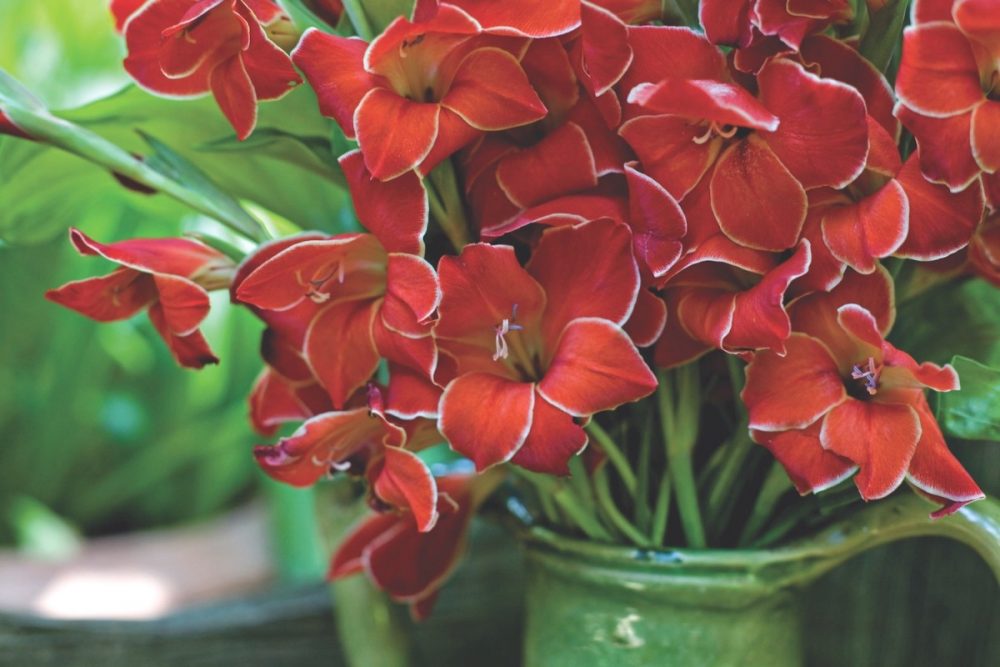
In making my garden in Decatur, Georgia, I have carefully planned to include plants that grew in these long-ago gardens. One day a copy of the catalog from Scott Kunst’s Old House Gardens in Ann Arbor, Michigan arrived. Swept away by a wave of nostalgia, I asked Scott if he knew the gladiolus ‘Spic and Span’. Within a couple of weeks, the corms (plant stems) arrived.
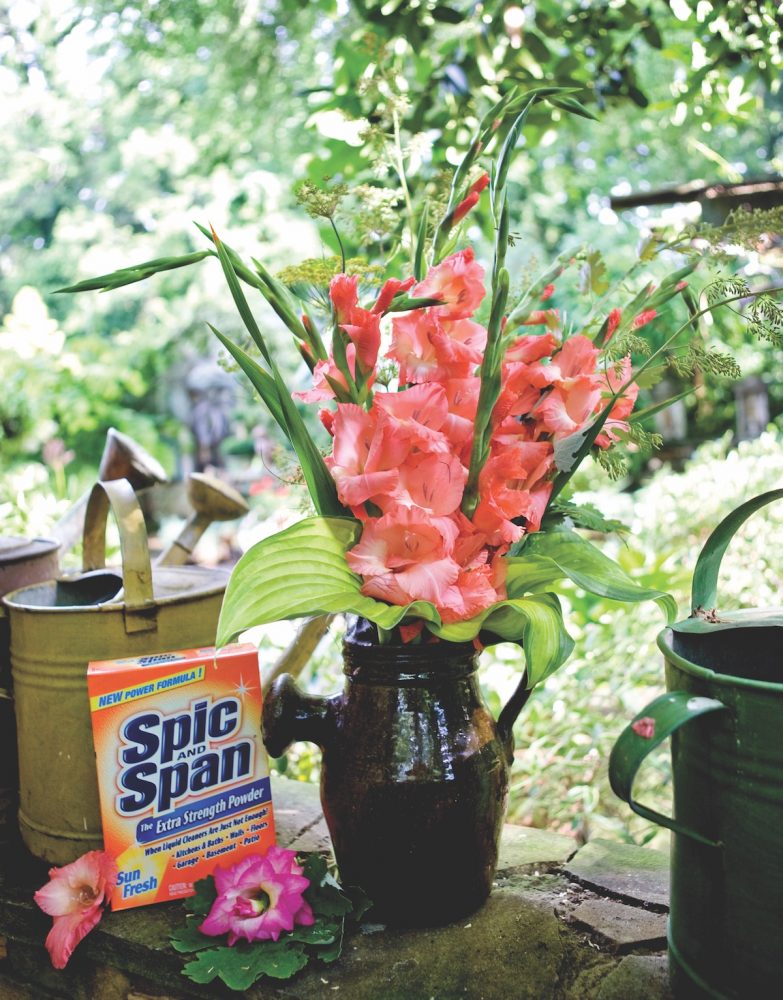
Summers have passed and ‘Spic and Span’, along with numerous other antique gladioli, have again become a part of my garden. Emboldened by finding ‘Spic and Span’, I have sought out other antique varieties such as ‘Venetie’, ‘Atom’, ‘Carolina Primrose’, and ‘Boone’.
I have become particularly enamored of the non-hybrid glads, or species glads. I found my first species, Gladiolus dalenii, growing among the great oaks at Brookgreen Gardens in South Carolina. Most of the species glads are native to Europe, the Mediterranean region, and southern Africa. G. dalenii has been in garden cultivation in America since 1843. The intensely orange flowers form what looks like a hood over their pale yellow throats.
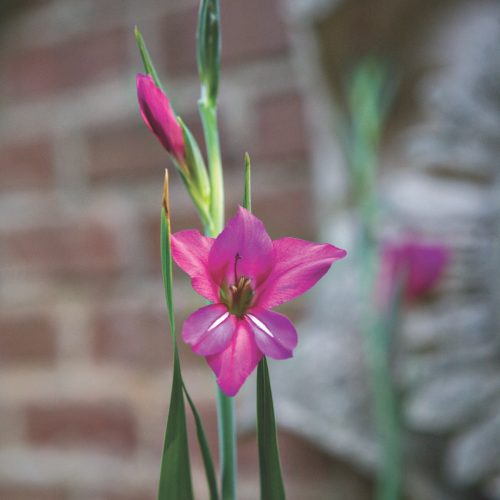
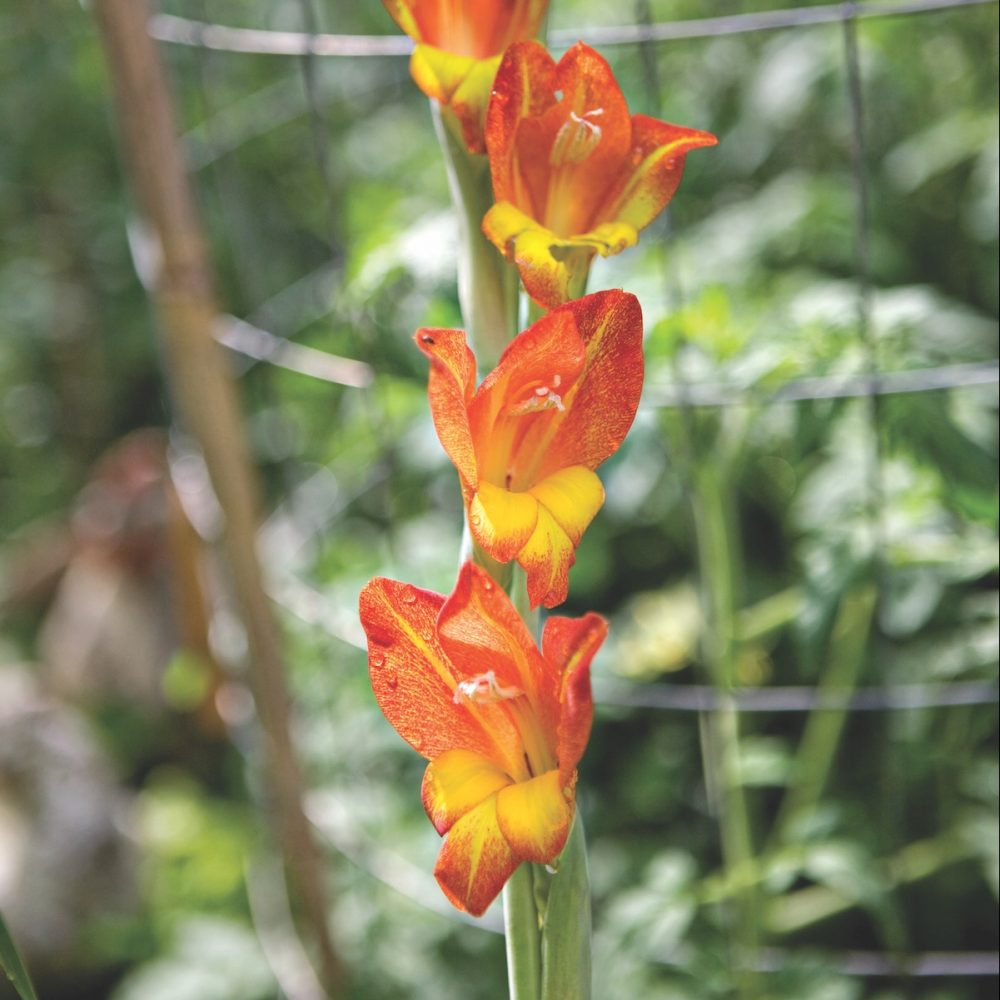
Another species I grow is the Byzantine gladiolus, which blooms a shimmering purple first in early May. Afterward, other varieties offer continuous spikes of bloom for several months. The season ends with the Abyssinian gladiolus (Gladiolus callianthus) collected from the mountains of Ethiopia in 1844. ‘Abyssinia’ is the old name for Ethiopia, which, of course, is in Africa. Because another focus of my garden is fragrance throughout the year, this species fits easily into the scheme, as it is delightfully fragrant in July.
The name “gladiolus” comes from ancient Rome. A sword was called a “gladius” and a small sword was called a “gladiolus.” Pliny the Elder named the genus in an allusion to the shape of the narrow leaves. The word is also the root word of “gladiator,” one who carried a sword into the coliseum and lived and died by the sword.
Most recently, I reread Bobby J. Ward’s book, A Contemplation Upon Flowers, and discovered two more species, G. cardindinalis and G. tristis. Needless to say, they have been ordered, and in a few years there will be corms to share with several friends including Brooks Garcia, Lynda Hills, and Sam Flowers who all share my passion for these plants. We have dubbed ourselves the “gladiators,” though we are not willing to die by the sword. We prefer to garden with a shovel.
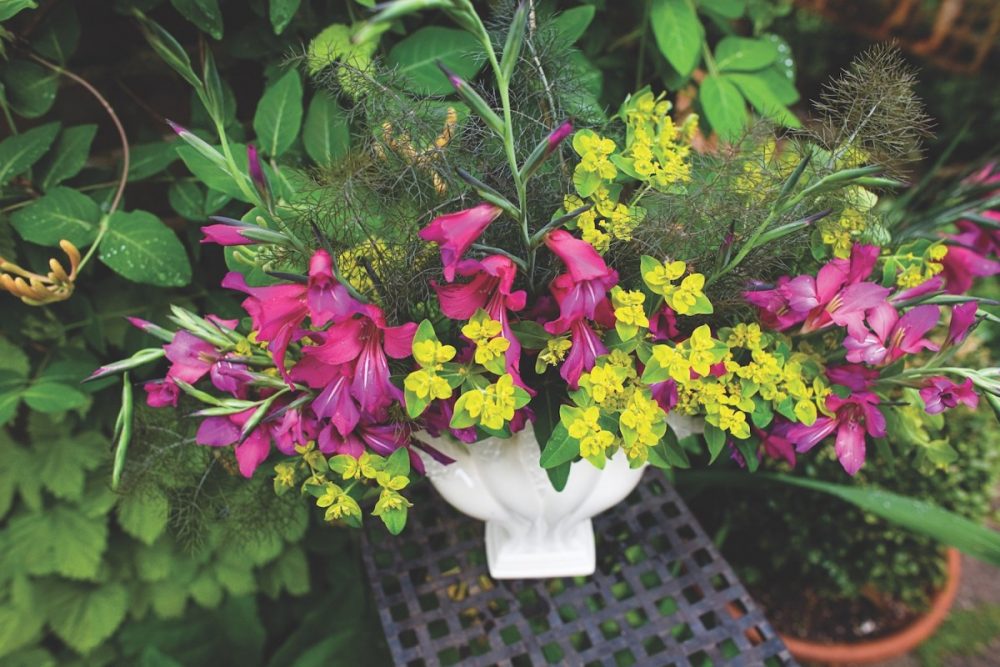
By Ryan Gainey | Photography by Alecia Lauren Photography
The late garden designer and author Ryan Gainey wrote a regular column in Flower for many years, sharing his remarkable gardening knowledge and stories. See more from Gainey’s garden:
